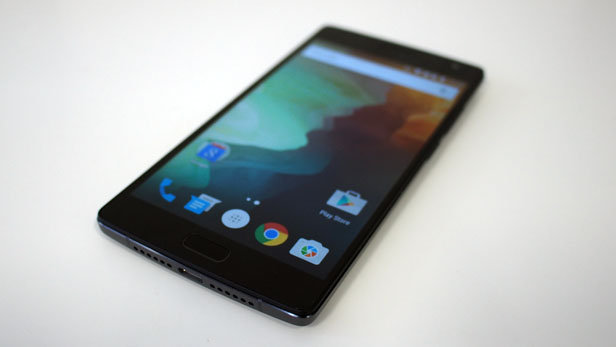

The OnePlus 2 is finally here, priced at a competitive $329 for the 16GB version and $389 for the 64GB model. But the question on everyone’s mind: Is it really the “flagship killer” as OnePlus calls it?
The short answer is yes, as this phone matches up in many ways to competitors’ models that cost twice the price. However, that’s not to say it’s better in every way. Still, on first impression the OnePlus 2 is an extraordinary phone, one that’s sure to upset the status quo even more than the original OnePlus One did last year.
Same back, new frame
The first striking aspect of the OnePlus 2 is that it looks and feels like a well-made phone that utilizes quality materials. It still feels like a OnePlus – the back sports the same rough textured plastic, which feels more like stone than the slick plastic of other phones. It means the OnePlus 2 is extremely grippy.
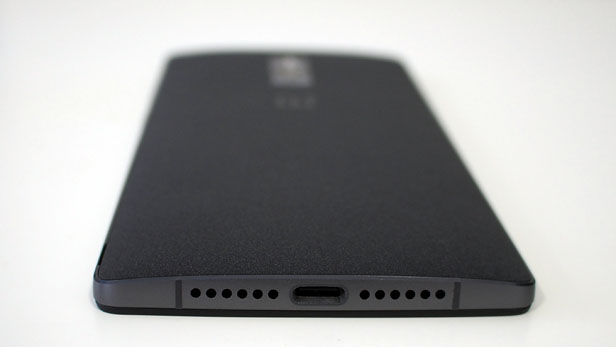
The back is a lot easier to remove this time, too. The rear cover is more like the back on the Galaxy Note 4 – it just peels off the metal frame without any fuss. And it’s that frame that makes all the difference. Suddenly, the OnePlus 2 feels like a flagship, as well as performing like one.
It’s not a particularly thin phone, but it is both narrower and shorter than the iPhone 6 Plus with the same size screen. At 5.5 inches it’s still a big phone, but if you’re used to 5-inch screens then you shouldn’t find the OnePlus 2 too tricky to use.

At 175g it’s substantial too, but not too heavy to use for prolonged periods.
The design touches don’t end there. The metal buttons are placed exactly where you want them to be and there’s a smart notification toggle that comes with three settings – on, mute and all off, for when you don’t even want it to vibrate. Useful stuff.
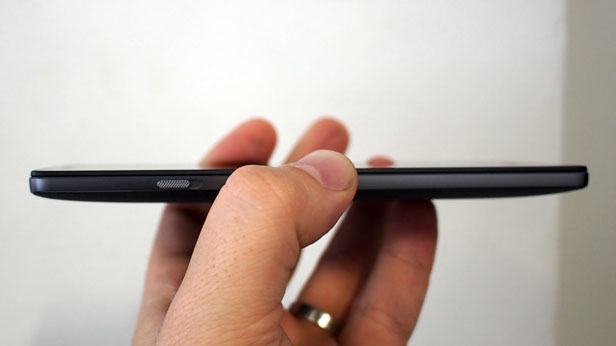
The OnePlus 2 might not feel quite as classy as the Galaxy S6 Edge or iPhone 6 Plus, but it’s not far off them either. On first impressions we prefer bother the look and feel of it over the far more expensive LG G4 and Sony Xperia Z3+. Flagship killer? So far so lethal.
Anaemic screen
The 5.5-inch 1080p screen is perfectly acceptable in terms of specs – on paper it’s the same as the iPhone 6 Plus.
In reality, however, the display is a little anaemic. It’s not the lack of Quad HD resolution that’s the problem – the screen is sharp enough and has good viewing angles. The problem is the muted colours that look washed out, although top brightness is decent.
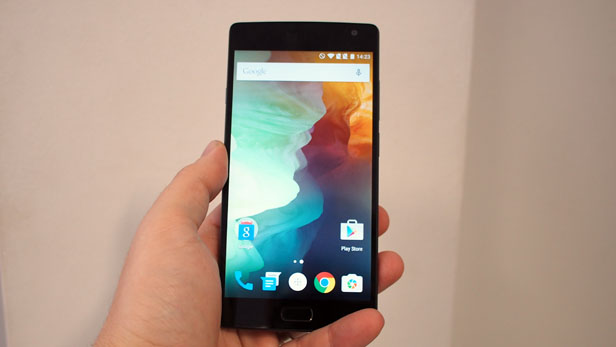
There’s no doubt I’d rather look at LG G4 or Galaxy S6’s screen more, but the OnePlus 2’s display is still good, particularly when you compare it to similarly priced handsets.
Cool and quick
Qualcomm Snapdragon 810, 4GB DDR4 RAM (64GB version) 3GB DDR4 RAM (16GB version)
Alarm bells rang when OnePlus announced the OnePlus 2 would use Qualcomm’s Snapdragon 810 chipset. It’s as speedy as it comes when put through its paces, but it does tend to make phones a little toasty.
In the hour or so I had with the OnePlus 2, I didn’t notice any problems at all – and I really tried to get it all hot and bothered. A few dozen photos, two minutes of 4K video, a quick bout of Hill Climb Racing and some general browsing left it barely warm.
On first impressions it looks like the OnePlus 2 is both slick, fast and responsive without succumbing to some of the issues we’ve experienced with the Xperia Z3+ or LG G Flex 2 that also pack the Snapdragon 810 processor.
This is because the OnePlus 2 is using a revised version of the processor (although HTC reckons it’s the same as the one in the One M9) and has worked hard on the thermal regulation. It’s clearly working.
We weren’t able to put the OnePlus 2 through our range of benchmarks so we don’t know quite yet how well it stacks up to other flagships, but it should be on par, and certainly feels more than fast enough for most people.
Improved camera
13-megapixel rear camera, 5-megapixel front camera, Optical image stabilization
Cameras are one of the most hotly contested aspects of phones. There’s little to separate the iPhone 6 Plus, LG G4 and Galaxy S6 – arguably the best camera phones on the market.
The OnePlus 2 has a 13-megapixel sensor, just like its predecessor, but this time OnePlus has increased the size of the pixels to 1.3 microns. That’s bigger than the 1.1 microns of the S6 but smaller than the 1.5 microns of the iPhone 6. Why should you care? Well the larger the pixel the more light it lets in and this helps when taking photos in darker environments.
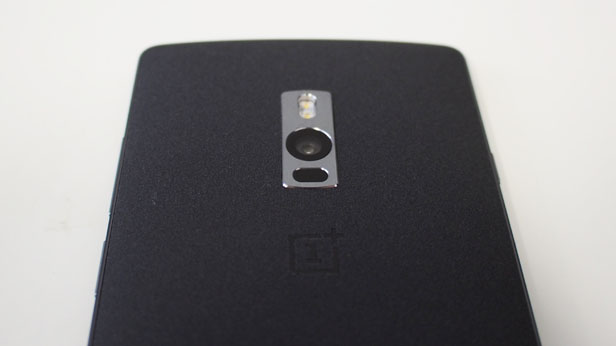
It’s impossible to test a phone camera adequately when you can’t see the images on a big screen, but on first impression the OnePlus 2 manages to take decent shots. The one thing I noticed, however, is that the OnePlus takes an age to process photos with HDR turned on – that’s something the iPhone 6, S6 and G4 have cracked.
This could mean the OnePlus 2 won’t be snuffing out the competition when it comes to taking pictures. It may still be the best cameraphone in its price range, though – we’ll find out when we review it fully.
Breathing easy with OxygenOS
The OnePlus 2 runs OxygenOS on Android 5.0 Lollipop off the bat, unlike the OnePlus One that launched with CyanogenMod.
The experience is almost pure Android, but with a few bells and whistles thrown in. Off screen gestures and customizable buttons are all still there, and it also comes with a bunch of personalization controls. It’s not as power-user pleasing as CyanogenMod, but it is simple to use.
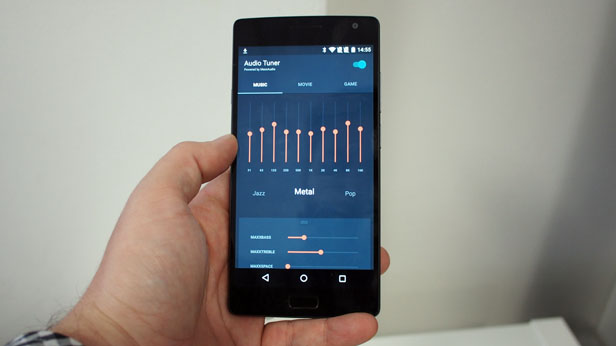
I did have some issues with the camera app, it was tricky to zoom in and flick through images. OnePlus told me this will be resolved in a software update.
The slick SwiftKey keyboard that learns as you type is also included as the OnePlus 2’s main keyboard.
Faster than Touch ID – Less reliable than Touch ID
One of the most talked about new features on the OnePlus 2 is its fingerprint sensor. This lets you unlock the phone using your digits just as you can on the iPhone 6 or Galaxy S6.
It’s quick and easy to set up your fingerprints, and the phone unlocks in fractions of a second when the screen is on. OnePlus claims it unlocks faster than the iPhone 6 and based on our testing that’s right.

However, I found its performance variable when the screen is turned off. It just didn’t work as consistently as I’d like for such a key feature. Hopefully software optimization will sort out a lot of these issues, as they did with the fingerprint scanner on the Galaxy S5.
Type C USB = No more fumbling
Fingerprint scanners are so yesterday though, what about real innovation? Well the OnePlus 2 can lay claim to being the very first smartphone to use Type C USB. That means no more guessing when you’re trying to plug in your phone.
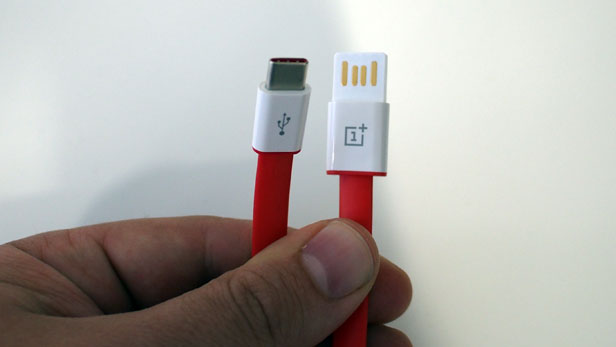
What’s the OnePlus 2 missing?
Not much when you compare it to the flagships it’s looking to crush. There’s no microSD slot, which plenty of Android fans crave in their phones, but it does include dual SIM slots so you can have two nano-SIMs with two different numbers working off one device.
This isn’t a feature many people in the U.K. or U.S. care about, but it’s huge elsewhere in the world and I’ve always found it handy, particularly when roaming.
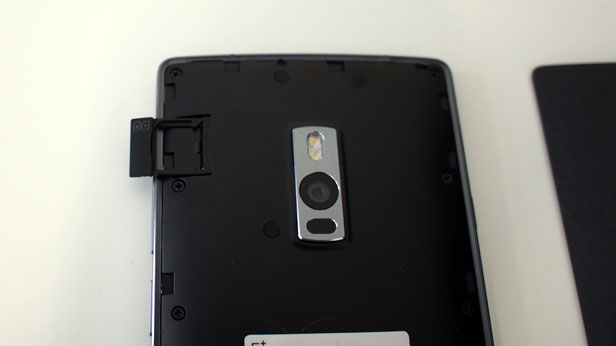
Perhaps the biggest and most interesting omission is NFC. Google Wallet requires NFC to work as a touch-and-pay device and with the growth of Apple Pay, and Samsung Pay coming soon, this is an area the OnePlus 2 will be found wanting.
Less of a problem is a lack of wireless charging, we’re sure third-party cases will come along that provide the feature. The battery isn’t removable either, but at 3,300mAh it should provide ample battery life. We’ll need a lot more time with it before we know for sure, though.
First Impressions
The OnePlus 2 looks to build on the awesome OnePlus One in all the right ways. The fingerprint scanner might not be perfect, but the OnePlus 2 trounces every other phone in its price bracket.
Would I rather have it than a Samsung Galaxy S6 Edge? Not if both were offered to me as a gift and I had to choose. If I had to open my wallet, though, I’d be insane not to consider the exceptional value the OnePlus 2 brings to the table.
Of course it all comes down to being able to buy it. The OnePlus 2 is only available via invitation – does OnePlus like you enough to give you the opportunity to buy one? If yes then it’ll be hard to consider any other phone in its price range. Only the Motorola Moto X Play, announced recently, comes close to offering the same value for money at a decent specification.
This post is in partnership with Trusted Reviews. The article above was originally published at TrustedReviews.com
More Must-Reads from TIME
- Donald Trump Is TIME's 2024 Person of the Year
- Why We Chose Trump as Person of the Year
- Is Intermittent Fasting Good or Bad for You?
- The 100 Must-Read Books of 2024
- The 20 Best Christmas TV Episodes
- Column: If Optimism Feels Ridiculous Now, Try Hope
- The Future of Climate Action Is Trade Policy
- Merle Bombardieri Is Helping People Make the Baby Decision
Contact us at letters@time.com